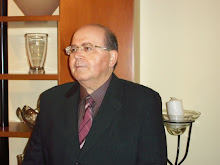Economy - overview:Albania, a formerly closed, centrally-planned state, is making the difficult transition to a more modern open-market economy. Macroeconomic growth averaged around 6% between 2004-08, but declined to about 3% in 2009-10. Inflation is low and stable. The government has taken measures to curb violent crime, and recently adopted a fiscal reform package aimed at reducing the large gray economy and attracting foreign investment. The economy is bolstered by annual remittances from abroad representing about 15% of GDP, mostly from Albanians residing in Greece and Italy; this helps offset the towering trade deficit. The agricultural sector, which accounts for over half of employment but only about one-fifth of GDP, is limited primarily to small family operations and subsistence farming because of lack of modern equipment, unclear property rights, and the prevalence of small, inefficient plots of land. Energy shortages because of a reliance on hydropower, and antiquated and inadequate infrastructure contribute to Albania's poor business environment and lack of success in attracting new foreign investment needed to expand the country's export base. The completion of a new thermal power plant near Vlore has helped diversify generation capacity, and plans to upgrade transmission lines between Albania and Montenegro and Kosovo would help relieve the energy shortages. Also, with help from EU funds, the government is taking steps to improve the poor national road and rail network, a long-standing barrier to sustained economic growth.
GDP (purchasing power parity):$23.95 billion (2010 est.) country comparison to the world: 115
$23.23 billion (2009 est.)
$22.49 billion (2008 est.) note: data are in 2010 US dollars
Albania has an informal, and unreported, sector that may be as large as 50% of official गडप
GDP (official exchange rate):$11।58 billion (2009 est.)
GDP - real growth rate:3.1% (2010 est.) country comparison to the world: 114
3.3% (2009 est.)
7।8% (2008 est.)
GDP - per capita:$8,000 (2010 est.) country comparison to the world: 124
$7,800 (2009 est.)
$7,500 (2008 est.) note: data are in 2010 US dollars ]
GDP - composition by sector:agriculture: 21.2% industry: 19.5% services: 59.3% (2009 est.)
Labor force:1.1 million (2009 est.) country comparison to the world: 140
Labor force - by occupation:agriculture: 58% industry: 15%
[services: 27% (September 2006 est.)
Unemployment rate:12.7% (2010 est.) country comparison to the world: 134
12.8% (2009 est.) note: these are official rates, but actual rates may exceed 30% due to preponderance of near-subsistence farming
Population below poverty line:25% (2004 est.) []
Household income or consumption by percentage share:lowest 10%: 3.2% highest 10%: 25.9% (2005)
Distribution of family income - Gini index:26.7 (2005) country comparison to the world: 126
Investment (gross fixed):29.8% of GDP (2009 est.) country comparison to the world: 19
Budget:revenues: $3.099 billion expenditures: $3.521 billion (2009 est.) []
Public debt:59.3% of GDP (2010 est.) country comparison to the world: 34
58.1% of GDP (2009 est.)
Inflation rate (consumer prices):3.4% (2010 est.) country comparison to the world: 99
2.2% (2009 est.)
Central bank discount rate:5.25% (31 December 2009) country comparison to the world: 71
6.25% (31 December 2008)
Commercial bank prime lending rate:12.66% (31 December 2009 est.) country comparison to the world: 63
13.02% (31 December 2008 est.)
Stock of narrow money:$2.708 billion (31 December 2010 est)
$2.995 billion (31 December 2009 est)
Stock of broad money:$9.096 billion (31 December 2009)
$9.279 billion (31 December 2008)
Stock of domestic credit:$7.701 billion (31 December 2010 est.) country comparison to the world: 104
$8.231 billion (31 December 2009 est.)
Market value of publicly traded shares:$NA ]
Agriculture - products:wheat, corn, potatoes, vegetables, fruits, sugar beets, grapes; meat, dairy products
Industries:food processing, textiles and clothing; lumber, oil, cement, chemicals, mining, basic metals, hydropower
Industrial production growth rate:3% (2009 est.) country comparison to the world: 103
Electricity - production:2।888 billion kWh (2007 est.) country comparison to the world: 124
Electricity - consumption:3.603 billion kWh (2007 est.) country comparison to the world: ११८
Electricity - exports:0 kWh (2008 est।)
Electricity - imports:2।475 billion kWh (2008 est.)
Oil - production:5,400 bbl/day (2009 est।)
Oil - consumption:36,000 bbl/day (2009 est।) country comparison to the world: 109
Oil - exports:749 bbl/day (2005 est.)
Oil - imports:24,080 bbl/day (2007 est.)
Oil - proved reserves:199.1 million bbl (1 January 2010 est.)
Natural gas - production:30 million cu m (2008 est।) country comparison to the world: 86
Natural gas - consumption:30 million cu m (2008 est.)
Natural gas - exports:0 cu m (2008 est।)
Natural gas - imports:0 cu m (2008 est।)
Natural gas - proved reserves:849।5 million cu m (1 January 2010 est.) country comparison to the world: 100
Current account balance:-$1.245 billion (2010 est.) country comparison to the world: 143
-$1.845 billion (2009 est.)
Exports:$1.339 billion (2010 est.) country comparison to the world: 145
$1.048 billion (2009 est.)
Exports - commodities:textiles and footwear; asphalt, metals and metallic ores, crude oil; vegetables, fruits, tobacco
Exports - partners:Italy 58.75%, Greece 9.69%, Austria 6.73%, China 5.68% (2009)
Imports:$4.337 billion (2010 est.) country comparison to the world: 127
$4.264 billion (2009 est.)
Imports - commodities:machinery and equipment, foodstuffs, textiles, chemicals
Imports - partners:Italy 29.94%, Greece 14.05%, Turkey 7.1%, Germany 6.9%, China 5.39% (2009)
Reserves of foreign exchange and gold:$1.992 billion (31 December 2010 est.) country comparison to the world: 98
$2.37 billion (31 December 2009 est.)
Debt - external:$1.55 billion (2004) country comparison to the world: १४४
Exchange rates:leke (ALL) per US dollar - 106.5 (2010), 94.979 (2009), 79.546 (2008), 92.668 (2007), 98.384 (2006)
Εγγραφή σε:
Σχόλια ανάρτησης (Atom)





Δεν υπάρχουν σχόλια:
Δημοσίευση σχολίου